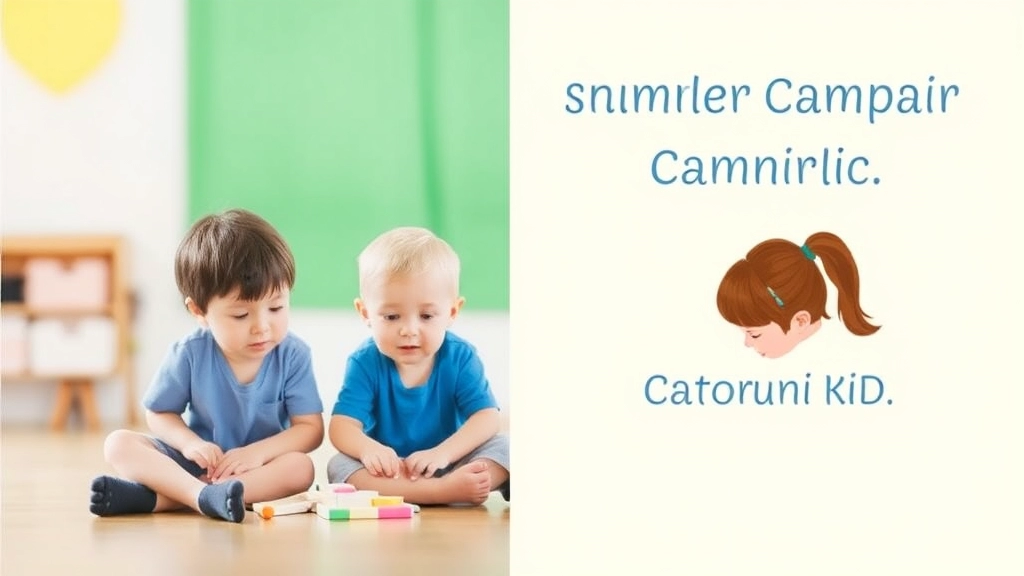Indoor Summer Camp Activities
When it comes to summer camp, unpredictable weather can sometimes force us indoors. But don’t worry, I’ve got you covered with some fantastic summer camp indoor activities ideas. Whether it’s arts and crafts challenges, fun group games, or even an indoor obstacle course, there’s plenty to keep the campers entertained and engaged. Let’s dive into these creative and interactive activities that will make your indoor camp sessions just as exciting as the outdoor ones!
Creative Indoor Activities
First up, indoor arts and crafts challenges are always a hit. From painting to DIY crafts, these activities not only spark creativity but also keep kids busy for hours. If your campers love performing, organising talent shows and skit performances can be a great way to showcase their skills. For those who enjoy a bit of a challenge, DIY escape room challenges or educational indoor science experiments can be both fun and educational. No matter the interest, there’s an indoor activity to make every camper’s day!
Indoor Arts and Crafts Challenges
Ever found yourself staring at a bunch of energetic kids stuck indoors, wondering how on earth to keep them entertained? Yeah, me too. The answer: Indoor Arts and Crafts Challenges. Not only do they keep the kids busy, but they also spark creativity and teamwork. Let’s dive into how you can make this happen.
Why Indoor Arts and Crafts?
First off, why even bother with arts and crafts? Simple. They’re fun, engaging, and educational. Kids get to use their hands, think creatively, and work together. Plus, it’s a fantastic way to boost their confidence when they see what they’ve created.
Getting Started: Basic Supplies
Before you jump in, you need to gather some basic supplies. Here’s a quick list:
- Paper (construction, coloured, plain)
- Markers, crayons, and coloured pencils
- Glue and scissors
- Craft sticks and pipe cleaners
- Beads, buttons, and sequins
- Old magazines and newspapers for collages
Challenge Ideas
Alright, now that you’ve got your supplies, let’s talk challenges. These aren’t just any arts and crafts activities. They’re designed to be competitive and collaborative, making them perfect for group settings.
- The Ultimate Collage Competition
- Objective: Create the most creative collage using old magazines and newspapers.
- Time Limit: 30 minutes
- Judging Criteria: Creativity, use of materials, and overall design
- Build a Tower
- Objective: Using only paper and glue, build the tallest tower possible.
- Time Limit: 20 minutes
- Judging Criteria: Height, stability, and creativity
- Mask Making
- Objective: Create a themed mask (animals, superheroes, etc.).
- Time Limit: 45 minutes
- Judging Criteria: Creativity, detail, and how well it fits the theme
- Nature Art
- Objective: Use natural materials (leaves, twigs, stones) to create a piece of art.
- Time Limit: 30 minutes
- Judging Criteria: Creativity, use of natural materials, and overall design
Pro Tips for Success
- Set Clear Rules: Make sure everyone knows the rules and the judging criteria.
- Encourage Teamwork: Some challenges can be done in pairs or small groups to foster collaboration.
- Keep It Fun: The goal is to have fun, so keep the atmosphere light and encouraging.
- Showcase the Art: At the end of the challenges, create a mini-gallery to display everyone’s work. It’s a great confidence booster!
Real Talk: Common Challenges
You might be thinking, âSounds great, but what if the kids aren’t into it?â Good question. Here’s how to tackle that:
- Mix It Up: Offer a variety of challenges to cater to different interests.
- Incentives: Small prizes or certificates can motivate participation.
- Lead by Example: Get involved yourself. If the kids see you having fun, they’re more likely to join in.
Fun Group Games for Indoor Play
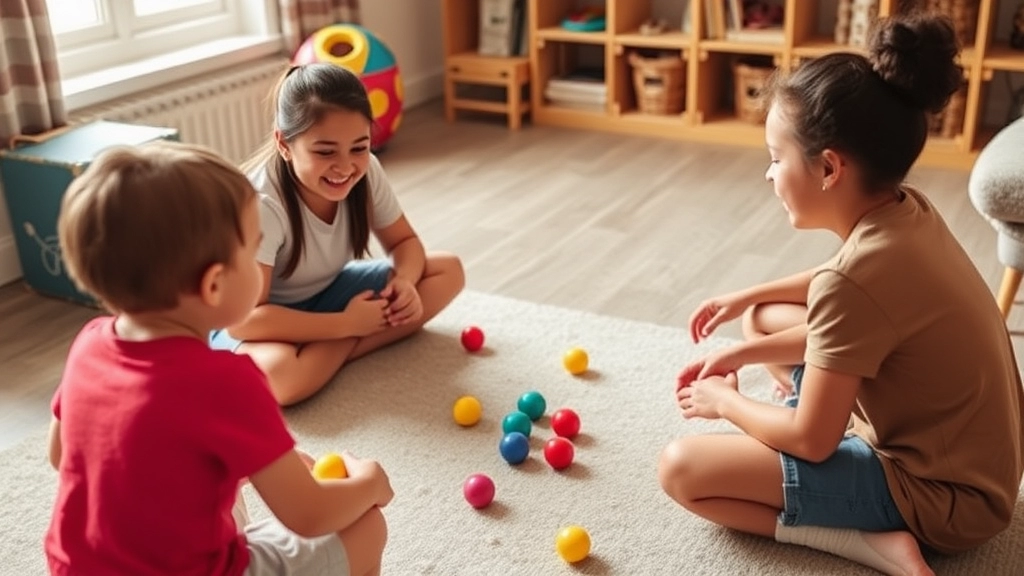
Ever been stuck inside with a bunch of kids and wondered, “How on earth am I going to keep them entertained?”
I’ve been there, mate.
Let’s dive into some fun group games for indoor play that’ll save your sanity and keep the kids buzzing.
Classic Indoor Games
Hide and Seek
- Perfect for all ages.
- Kids love the thrill of finding the best hiding spots.
- Pro tip: Set boundaries to avoid chaos.
Musical Chairs
- Simple and timeless.
- All you need is some music and chairs.
- Great for teaching kids about fair play and quick reflexes.
Interactive and Engaging
Simon Says
- A fantastic way to get kids listening and moving.
- Mix up the commands to keep it fresh.
- Example: “Simon says, hop on one foot.”
Charades
- Ideal for older kids.
- Split into teams and let the acting begin.
- Use themes like movies, animals, or books to keep it interesting.
Creative and Imaginative
Pictionary
- Grab a whiteboard or some paper.
- Draw and guess – it’s that simple.
- Encourages creativity and teamwork.
Story Chain
- One person starts a story with a sentence.
- Each person adds a sentence to build the story.
- Hilarious and unpredictable outcomes.
Movement and Energy
Freeze Dance
- Play some tunes and let the kids dance.
- Pause the music – they must freeze!
- Great for burning off energy.
Balloon Volleyball
- Set up a “net” using a string.
- Use a balloon instead of a ball.
- Safe, fun, and keeps them active.
Problem-Solving and Teamwork
Scavenger Hunt
- Create a list of items to find around the house.
- Work in teams to find everything.
- Adds a bit of adventure and competition.
Minute to Win It
- Quick, fun challenges using household items.
- Think stacking cups or balancing pencils.
- Perfect for short attention spans.
Real Talk
I know what you’re thinking, “These sound great, but will they really work?”
Yes, they will.
I’ve used these games with my own kids and in group settings.
They’re tried, tested, and true.
So next time you’re stuck indoors, remember these fun group games for indoor play.
They’ll keep everyone entertained and maybe even give you a moment to breathe.
And trust me, you’ll need it.
Talent Shows and Skit Performances
Ever tried to get a bunch of kids excited about indoor activities? It’s a challenge, right? But trust me, talent shows and skit performances are a game-changer.
Why Talent Shows and Skit Performances?
Talent shows and skit performances are more than just fun; they’re a brilliant way to build confidence, encourage creativity, and foster teamwork. Plus, they’re a blast for everyone involved.
How to Get Started
Step 1: Announce the Event
- Get the word out early. Give everyone enough time to prepare their acts.
- Create a sign-up sheet. Let campers choose whether they want to perform solo or in a group.
Step 2: Plan the Performances
- Set a theme. Themes can spark creativity. Think ‘Hollywood Night,’ ‘Superheroes,’ or ‘Around the World.’
- Set time limits. Keep performances short and sweetâaround 3-5 minutes each.
Step 3: Rehearsals
- Schedule practice sessions. This helps performers feel more confident and ensures everything runs smoothly.
- Provide feedback. Constructive criticism can help fine-tune the acts.
On the Big Day
Set the Stage
- Create a stage area. This could be a simple setup with some curtains and a spotlight.
- Arrange seating. Make sure everyone has a good view.
Host with Flair
- Have a lively host. Someone who can keep the energy up and engage the audience.
- Use a microphone. Ensure everyone can hear the performers.
Making It Special
Awards and Recognition
- Give out awards. Categories like ‘Best Solo Act,’ ‘Best Group Performance,’ and ‘Most Creative’ make everyone feel appreciated.
- Certificates or small trophies. These are great keepsakes.
Capture the Moments
- Record the performances. This not only makes a great memory but also allows for a fun playback later.
- Take lots of photos. Share them with parents and on social media (with permission, of course).
Real-Life Example: Our Last Talent Show
Last summer, we had a camper named Sam who was super shy. He decided to perform a magic trick for the talent show. With a bit of encouragement and practice, Sam nailed his act. The applause he received was incredible, and you could see his confidence soar. That’s the magic of talent showsâthey can transform a kid’s camp experience.
If you’re looking for more ideas on how to keep your campers engaged, check out our top summer camp group activities for fun and team building. And if you want to ensure your campers stay cool and comfy during these activities, don’t miss our guide on keeping your camper cool in summer.
Indoor Team Building Activities
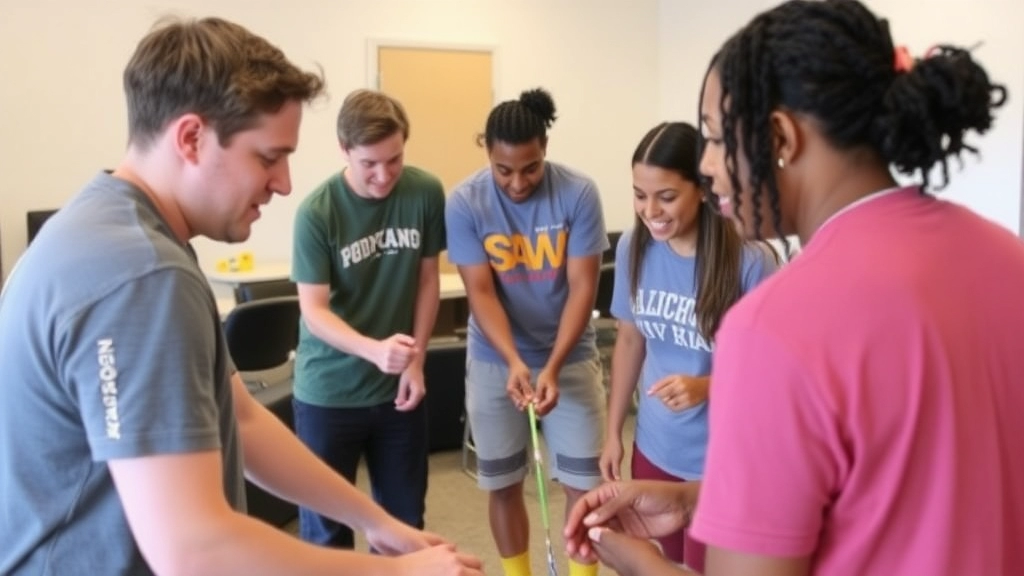
Ever felt like your group just isn’t clicking?
Or maybe you’re worried that team spirit is low?
Indoor team building activities can be a game changer.
Let’s dive into some killer ideas that can bring your team closer than ever.
Why Team Building Matters
Team building isn’t just a buzzword.
It’s about building trust, improving communication, and fostering a sense of unity.
When people work well together, everything else falls into place.
Ice Breakers to Get Started
Before diving into more complex activities, start with some ice breakers.
These are great for warming up the group and breaking down initial barriers.
- Two Truths and a Lie: Each person shares two true facts and one lie about themselves. The group guesses which is the lie.
- Human Knot: Everyone stands in a circle, grabs hands with two different people, and tries to untangle without letting go.
Problem-Solving Challenges
Now that everyone’s a bit more comfortable, move on to some problem-solving tasks.
These activities require teamwork and creative thinking.
- Escape Room Puzzles: Create mini escape room challenges that require the group to solve clues and unlock a final puzzle.
- Marshmallow Tower: Using only spaghetti, tape, and a marshmallow, teams compete to build the tallest freestanding structure.
Trust-Building Exercises
Trust is the foundation of any strong team.
These exercises help build that essential trust.
- Blindfold Obstacle Course: One person is blindfolded and guided through an obstacle course by their teammates.
- Trust Fall: Classic but effective. One person falls backward, trusting their team to catch them.
Communication Games
Good communication is key.
These games are designed to improve how your team communicates.
- Back-to-Back Drawing: Partners sit back-to-back. One describes a drawing while the other tries to recreate it without seeing it.
- Telephone Game: A message is whispered from person to person. See how much it changes by the end.
Reflection and Debrief
After all the activities, it’s crucial to reflect.
Discuss what worked, what didn’t, and how everyone felt.
- Group Discussion: Open up the floor for everyone to share their thoughts.
- Feedback Forms: Anonymous forms can help gather honest feedback.
Real-Life Example
I once facilitated a team-building day for a group that was struggling with communication.
By the end of the day, they were laughing and working together seamlessly.
It was a complete turnaround.
Indoor team building activities can transform your group.
From ice breakers to trust exercises, there’s something for every team.
So next time you’re feeling a bit disconnected, give these a try.
You’ll be amazed at the difference.
Educational Indoor Science Experiments
Ever wondered how to keep kids entertained and learning at the same time? Welcome to the world of educational indoor science experiments. I know what you’re thinking: “Science experiments? Indoors? With a bunch of kids?” Trust me, it’s not as chaotic as it sounds. In fact, it can be downright fascinating and super engaging for everyone involved.
Why Indoor Science Experiments?
Let’s address the elephant in the room. Why even bother with indoor science experiments? Well, there are a few good reasons:
- Weather-Proof: Rain or shine, you can keep the fun going.
- Educational Value: Kids learn while having fun. It’s a win-win.
- Safety: Controlled environment means fewer risks.
- Resource-Friendly: Most experiments require household items.
Getting Started: The Basics
Before we dive into specific experiments, let’s cover some basics. Here’s what you’ll need:
- Safety Gear: Goggles, gloves, aprons. Safety first, folks.
- Common Household Items: Baking soda, vinegar, food colouring, etc.
- Simple Instructions: Keep it straightforward. No one likes convoluted steps.
Top Indoor Science Experiments
Alright, let’s get into the good stuff. Here are some killer indoor science experiments that are sure to be a hit.
1. Volcano Eruption
Remember those baking soda volcanoes from school? They’re a classic for a reason.
- Materials Needed: Baking soda, vinegar, food colouring, a small container.
- Steps:
- Fill the container with baking soda.
- Add a few drops of food colouring.
- Pour in the vinegar and watch the eruption!
- Why It Works: The acid-base reaction between baking soda and vinegar creates carbon dioxide gas, leading to the eruption.
2. Invisible Ink
Ever wanted to send secret messages? Now you can.
- Materials Needed: Lemon juice, paper, a cotton swab, a heat source (like a lamp).
- Steps:
- Dip the cotton swab in lemon juice and write your message on the paper.
- Let it dry completely.
- Hold the paper close to the heat source to reveal the message.
- Why It Works: The heat causes the lemon juice to oxidise and turn brown, revealing the hidden message.
3. Oobleck
This one’s a bit messy but totally worth it.
- Materials Needed: Cornstarch, water, food colouring (optional).
- Steps:
- Mix cornstarch and water in a bowl until you get a thick, gooey consistency.
- Add food colouring if desired.
- Play with it! Notice how it behaves like both a solid and a liquid.
- Why It Works: Oobleck is a non-Newtonian fluid, meaning its viscosity changes under stress.
Pro Tips for a Smooth Experience
- Prep in Advance: Gather all materials before starting.
- Set Ground Rules: Make sure everyone knows the safety guidelines.
- Engage the Kids: Ask questions like, “What do you think will happen?” to keep them involved.
- Clean-Up Plan: Have a strategy for cleaning up to make the process seamless.
Real Stories, Real Fun
I remember the first time I tried the volcano eruption experiment with a group of kids. Their eyes lit up as the “lava” bubbled over. One kid even asked if we could do it again with different colours. It was a hit, and the best part? They learned about chemical reactions without even realising it.
For more exciting activities, check out our summer camp fun science activities for kids or explore creative printable activities to keep the learning going.
Creative Indoor Obstacle Courses
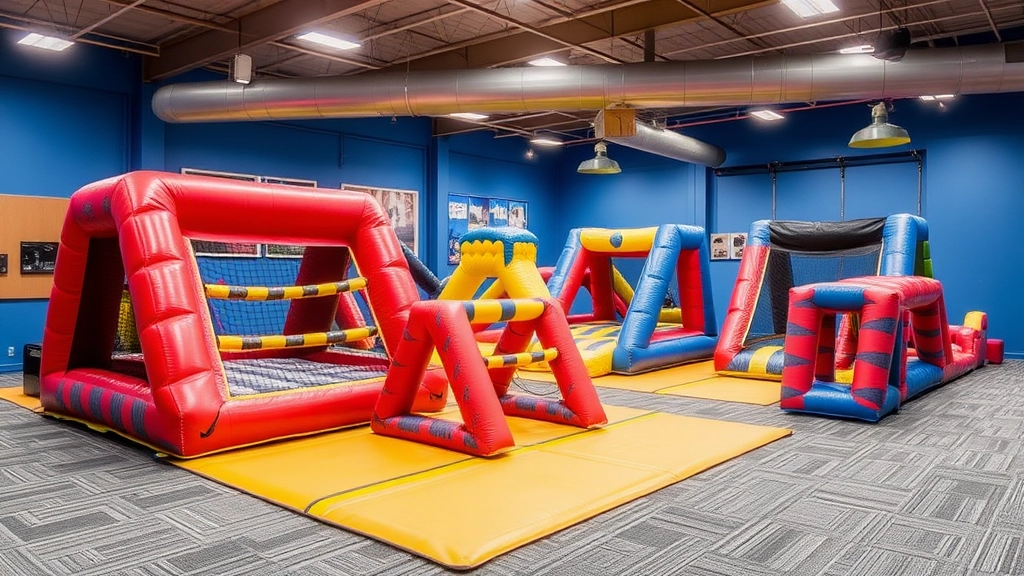
Ever wondered how to keep kids entertained indoors without them bouncing off the walls?
I get it. It’s a real challenge.
But here’s a solution that’s both fun and engaging: Creative Indoor Obstacle Courses.
Why Indoor Obstacle Courses?
First off, they’re a fantastic way to burn off energy.
Plus, they’re great for building motor skills and coordination.
And let’s be honest, they’re just plain fun.
Setting Up Your Indoor Obstacle Course
You don’t need fancy equipment.
Here’s what you can use:
- Furniture: Chairs, tables, and sofas can be great for crawling under or jumping over.
- Household Items: Use pillows, blankets, and even books to create barriers and checkpoints.
- Tape: Create paths or boundaries with painter’s tape on the floor.
Example Obstacle Course
Let’s make this real.
Imagine setting up a course like this:
- Crawl Under the Table: Start by crawling under the dining table.
- Pillow Hopping: Jump from one pillow to another without touching the floor.
- Book Balance: Walk across a line of books without stepping off.
- Chair Tunnel: Crawl through a tunnel made of chairs.
- Blanket Slide: Slide across a blanket on the floor.
Tips for Success
- Safety First: Make sure the course is safe. No sharp edges or breakable items.
- Age Appropriate: Tailor the difficulty to the age group.
- Time It: Use a timer to make it a race. Kids love a bit of competition.
- Get Creative: Change up the course regularly to keep it interesting.
Stories from the Field
I remember setting up a course for a group of kids at a camp.
We used everything from yoga mats to broomsticks.
The kids loved it.
They were laughing, competing, and most importantly, they were engaged.
Why It Works
Indoor obstacle courses work because they’re versatile.
You can set them up in any space, big or small.
They’re also adaptable to any age group.
From toddlers to teens, everyone can get involved.
DIY Escape Room Challenges for Campers
Ever wondered how to keep campers engaged indoors without them getting bored out of their minds? I get it, keeping a group of energetic kids entertained can be a real challenge. But what if I told you there’s a way to turn those restless moments into an exciting adventure? Yep, I’m talking about DIY Escape Room Challenges for campers.
Why DIY Escape Rooms?
First off, let’s address the big question: why even bother with DIY escape rooms? Well, here are some solid reasons:
- Engagement: Kids love puzzles and challenges. An escape room keeps them hooked.
- Teamwork: It’s a fantastic way to build teamwork and collaboration skills.
- Problem-Solving: It sharpens their critical thinking and problem-solving abilities.
- Fun Factor: It’s just plain fun. Who doesn’t love a good mystery to solve?
Setting Up Your DIY Escape Room
Alright, let’s dive into the nitty-gritty of setting up your own escape room. Don’t worry; you don’t need to be a professional set designer. Here’s a simple guide to get you started:
- Choose a Theme: Whether it’s a haunted house, a pirate treasure hunt, or a spy mission, pick a theme that excites the campers.
- Create a Storyline: A good story makes the experience immersive. For example, “You’ve been trapped in a wizard’s lair and need to find the magical key to escape.”
- Design Puzzles and Clues: This is where it gets fun. Mix it up with:
- Riddles: Simple yet challenging questions.
- Physical Puzzles: Locks and keys, hidden objects.
- Codes and Ciphers: Think secret messages and cryptic codes.
- Set Up the Room: Use everyday items to create your escape room. Furniture, props, and even printed clues can transform a regular room into an adventure zone.
- Test It Out: Run through the escape room yourself or with a colleague to ensure everything flows smoothly.
Tips for a Successful Escape Room
Here are some tips to make sure your DIY escape room is a hit:
- Keep It Simple: Don’t overcomplicate the puzzles. They should be challenging but solvable.
- Time Limit: Set a reasonable time limit, usually 30-60 minutes.
- Hints and Help: Be ready to give hints if the campers get stuck. You want them to have fun, not get frustrated.
- Safety First: Ensure the room is safe and there are no hazards.
Real-Life Example
Let me share a quick story. Last summer, we set up a pirate-themed escape room for a group of 12-year-olds. We had a treasure map, hidden keys, and even a âlockedâ treasure chest. The kids had to solve riddles to find the keys and unlock the chest. The excitement and teamwork were off the charts. They were so engrossed that they didn’t even realise an hour had passed!
If you’re looking for more ideas to keep the fun going, check out our fun games to play at summer camp and explore summer camp scavenger hunt ideas for more engaging activities.
Interactive Storytelling and Puppet Shows
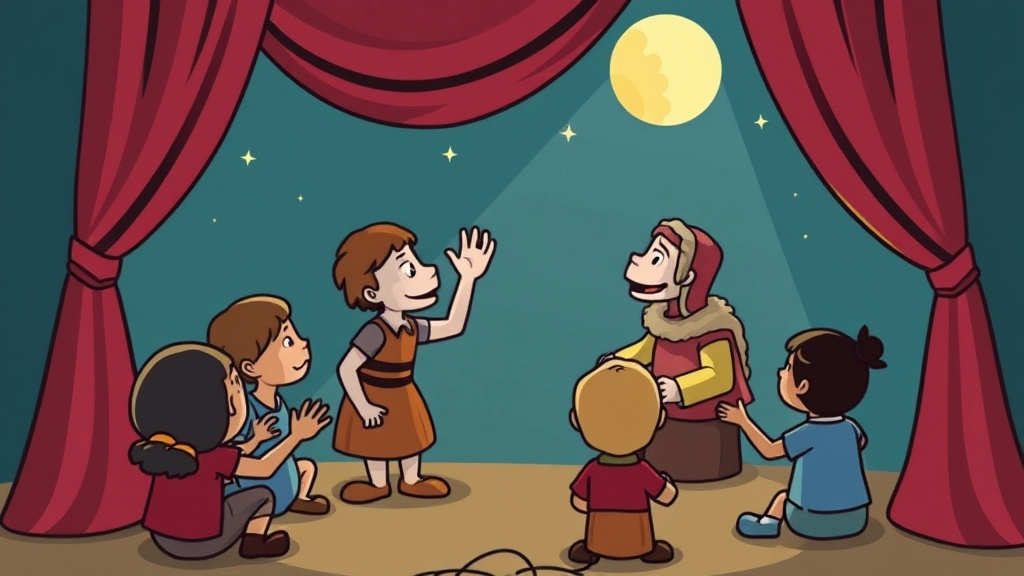
Ever wondered how to keep kids entertained indoors without screens?
I’ve got you covered.
Interactive storytelling and puppet shows are the answer.
These activities are engaging, fun, and spark creativity.
Why Interactive Storytelling?
Kids love stories.
But interactive storytelling takes it up a notch.
Here’s why:
- Engagement: Kids become part of the story.
- Creativity: They can influence the plot.
- Learning: Enhances listening and comprehension skills.
How to Do It
You don’t need to be a professional storyteller.
Just follow these steps:
- Choose a Story: Pick a popular tale or make one up.
- Props and Costumes: Simple items like hats, scarves, or even kitchen utensils.
- Involve the Kids: Let them choose characters or plot twists.
- Sound Effects: Use household items for dramatic effects.
Puppet Shows: The Classic Entertainment
Puppet shows never get old.
They’re simple, yet effective.
Here’s what you need:
- Puppets: Store-bought or DIY with socks and buttons.
- Stage: A table with a cloth draped over it works.
- Script: Keep it short and sweet.
- Audience Participation: Encourage kids to ask questions or guess what happens next.
Benefits of Puppet Shows
Puppet shows are more than just fun.
They help in:
- Language Development: Kids learn new words and phrases.
- Social Skills: They learn to interact and share.
- Confidence: Performing boosts self-esteem.
Real-Life Example
Last summer, I hosted a puppet show for my niece and nephew.
We made puppets from old socks and created a stage using a cardboard box.
The kids were thrilled.
They even made up their own stories and performed them.
It was a hit.
Tips for Success
- Keep it Simple: Don’t overcomplicate the story.
- Be Enthusiastic: Your energy is contagious.
- Practice: A quick run-through helps.
Interactive storytelling and puppet shows are a surefire way to keep kids entertained.
Plus, they’re educational.
Give it a go next time you’re stuck indoors.
Indoor Carnival and Station Games
Ever wondered how to bring the excitement of a carnival indoors? You’re not alone. Many of us struggle with keeping kids entertained when the weather isn’t cooperating. Trust me, I’ve been there. So, let’s dive into how you can create an indoor carnival experience that’s just as fun and engaging as the real deal.
Setting Up Your Indoor Carnival
Setting up an indoor carnival might sound like a huge task, but it’s totally doable. Here’s how you can break it down:
- Choose a Theme: Whether it’s a classic circus theme or something more modern, a theme sets the tone.
- Decorations: Use colourful streamers, balloons, and posters to create that carnival vibe.
- Stations: Plan a variety of game stations to keep everyone engaged.
Fun Indoor Station Games
Now, let’s talk about the heart of the carnival â the games! Here’s a list of easy-to-set-up station games that are guaranteed to be a hit:
- Ring Toss: Grab some bottles and rings. Simple, yet so much fun.
- Bean Bag Toss: Use a cardboard box with cut-out holes and let the kids aim for points.
- Duck Pond: Fill a small pool with water and floating ducks. Attach numbers underneath for a prize-winning game.
- Face Painting: Set up a face painting station with safe, washable paints.
- Balloon Pop: Fill balloons with small prizes or confetti and let the kids pop them.
Keeping It Real and Engaging
I remember the first time I set up an indoor carnival. The kids were ecstatic, and honestly, so was I. The key is to keep it engaging and interactive. Here are some tips:
- Rotating Stations: Have the kids rotate between stations to keep the energy high.
- Prizes: Small prizes or tokens can make a huge difference in keeping the excitement alive.
- Music: Play some upbeat carnival music to set the mood.
Real Questions and Worries
You might be thinking, âWhat if the kids get bored?â or âHow do I manage multiple stations?â Here’s the deal:
- Boredom Busters: Keep a few extra games or activities in your back pocket. Think quick, easy games like Simon Says or musical chairs.
- Station Management: Assign older kids or even adults to each station to help manage the flow and keep things running smoothly.
For more ideas on making your summer camp unforgettable, check out our top activities and choices and our guide on team-building activities.
Indoor Cooking and Baking Sessions
Ever wondered how to keep kids entertained indoors while teaching them something useful?
Enter indoor cooking and baking sessions.
Why Cooking and Baking?
Cooking isn’t just about food; it’s about creativity, teamwork, and learning.
Plus, who doesn’t love a good cookie?
What Can We Cook?
Here are some easy and fun ideas to get started:
- Cookies and Cupcakes: Simple, sweet, and always a hit.
- Mini Pizzas: Let them choose their toppings.
- Fruit Salads: Healthy and colourful.
- Sandwich Art: Make lunch fun and creative.
How to Make It Fun
The key is to keep it interactive and engaging.
Here’s how:
- Step-by-Step Stations: Set up different stations for each step of the recipe.
- Taste Testing: Let them taste ingredients and guess what they are.
- Decorating Contests: Who can make the best-looking cupcake?
Safety First
Always keep safety in mind.
Here are some quick tips:
- Supervision: Always have an adult present.
- Age-Appropriate Tasks: Give younger kids simpler tasks.
- Safety Gear: Aprons, oven mitts, and hair ties.
Learning Opportunities
Cooking is a fantastic way to sneak in some education.
Here’s what they can learn:
- Math: Measuring ingredients.
- Science: Understanding how ingredients react.
- Creativity: Designing their own dishes.
Real Stories
I remember the first time we did a baking session at camp.
Kids were hesitant at first.
But once they got their hands in the dough, they were hooked.
One camper even said, âI didn’t know baking could be this fun!â
For more fun and creative ideas, check out our Creative Summer Camp Art Ideas for Kids and Teens and our Kid-Friendly Summer Camp Lunch Ideas.
FAQs on Summer Camp Indoor Activities Ideas
What are some classic indoor games for kids?
Classic indoor games include Hide and Seek and Musical Chairs. These games are simple, timeless, and loved by kids of all ages. They also help in teaching fair play and quick reflexes.
What interactive games can keep kids engaged indoors?
Interactive games like Simon Says and Charades are fantastic for keeping kids engaged. These games encourage listening, movement, and creativity.
How can I incorporate creativity into indoor activities?
Creative activities such as Pictionary and Story Chain are great options. These activities encourage teamwork and allow kids to express their creativity through drawing and storytelling.
What are some energetic indoor games for kids?
Energetic games like Freeze Dance and Balloon Volleyball are excellent for burning off energy. These activities keep kids active and entertained.
How can indoor games promote problem-solving and teamwork?
Games like Scavenger Hunt and Minute to Win It challenges promote problem-solving and teamwork. These activities require kids to work together and think creatively to complete tasks.
What are some effective indoor team-building activities?
Effective indoor team-building activities include Two Truths and a Lie, Human Knot, and Escape Room Puzzles. These activities help build trust, improve communication, and foster a sense of unity among team members.
Why are indoor obstacle courses beneficial for kids?
Indoor obstacle courses are beneficial because they help burn off energy, build motor skills, and improve coordination. They are also versatile and can be set up using household items.
How can I set up a creative indoor obstacle course?
You can set up a creative indoor obstacle course using furniture, household items, and tape. For example, kids can crawl under tables, hop on pillows, and balance on books.
What are some tips for successful indoor obstacle courses?
Ensure safety by removing sharp edges and breakable items, tailor the difficulty to the age group, use a timer for competition, and regularly change the course to keep it interesting.
How can interactive storytelling and puppet shows benefit kids?
Interactive storytelling and puppet shows engage kids, spark creativity, and enhance listening and comprehension skills. They also promote language development, social skills, and confidence.
What do I need for a successful puppet show?
For a successful puppet show, you need puppets (store-bought or DIY), a stage (like a table with a cloth), a simple script, and audience participation to keep kids engaged.
What are some tips for successful interactive storytelling?
Keep the story simple, be enthusiastic, and involve the kids by letting them choose characters or plot twists. Using props and sound effects can also make the storytelling more engaging.
References
-
Top 10 Indoor Games and Activities
-
10 Indoor Games to Keep Kids Active
-
15 Fun Indoor Games for Kids

